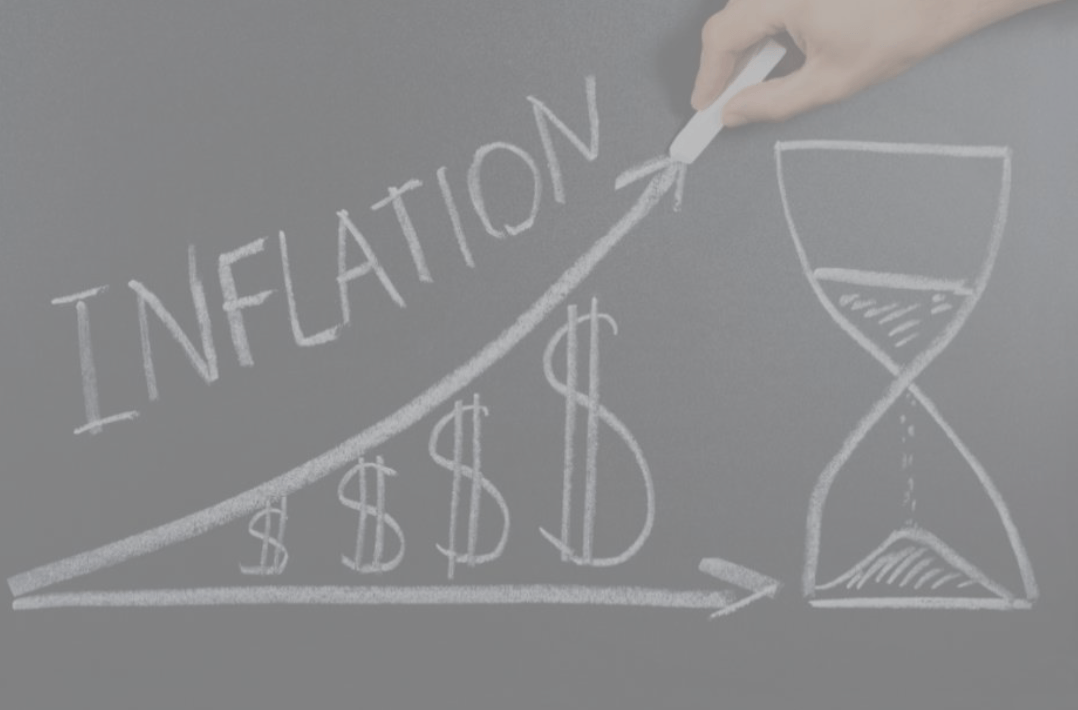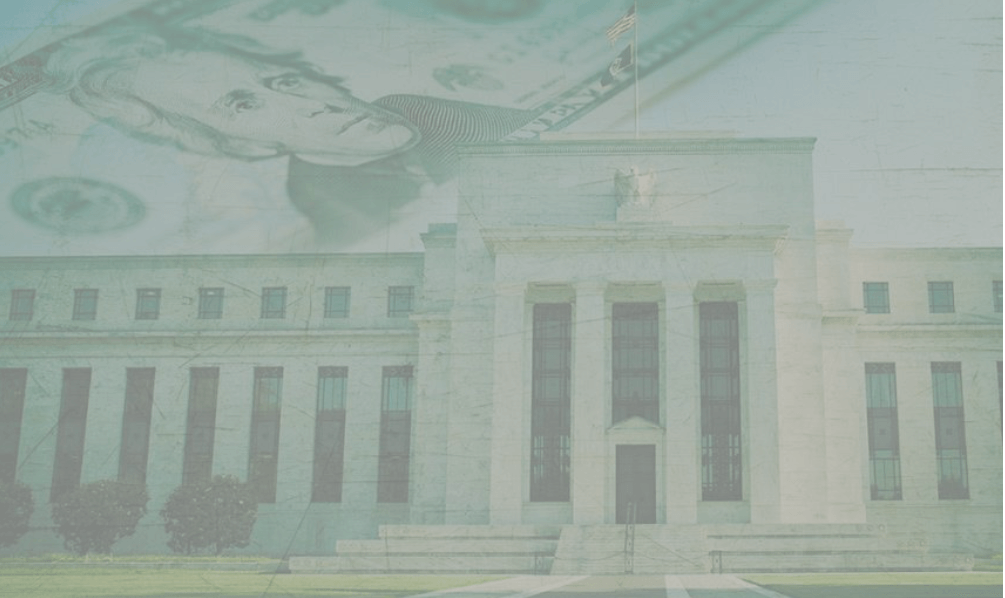Macro Economics, Predictions, Forecasters & Inflation
Wait . . . Inflation – what is that?
“For a piece of information to be desirable, it has to satisfy two criteria: it has to be important, and it has to be knowable.” – Warren Buffett
We continue to be in new unchartered waters with questions continually being asked by investors, as well as “experts,” including:
- Is the economy strong or bolstered with the influx of dollars being printed across the world? Should I invest now or wait for a pullback?
- What areas or sectors of the markets provide the most opportunities?
- Will interest rates rise or stay low?
- Are we going to experience higher inflation (or is it already here)?
A lot of talk around the Macro Economics of the environment yet are these macro economist any more accurate than the “weatherman?” Is the macro future knowable –
I believe our recent experiences have proven this to be no. Should we argue that macro forecasting is another area where, as with investing in general, it’s easy to be right as the consensus, but very hard to be more right. Consensus forecasts provide no advantage; I believe it’s only from being more right than others – from having a knowledge advantage – that investors can expect to dependably earn above average returns.
Many investors, even successful stock pickers or real estate buyers, believe their job requires them to develop a macro outlook and make pronouncements regarding their macro outlook, even in the absence of evidence linking their investment success to accurate macro forecasts. Nonetheless, many of us believe it is downright irresponsible to ignore these macro forecasts when investing.
As it nearly impossible to “look away” from these macro forecasts I’m referencing as nearly all are likely to be inaccurate, we, Precision Wealth Strategies, attempt to decipher enough to smooth the volatility while focusing on the “bottom up” approach – one investor financial plan at a time – one individual investment at a time.
“It ain’t what you don’t know that gets you into trouble. It’s what you know for sure that just ain’t so.” – Mark Twain
Let’s talk about what we have experienced recently and then forward to thinking about the future. To invert the Buffett
quote that began this memo, the macro future may not be knowable, but it certainly is important.
The “halfway” point to our 2021 halfway created a market pullback experience difficult to explain. There are many markets we watch and many markets our clients are investing within. Not only are there different exchanges (NYSE, NASDAQ, Tokyo Stock Exchange London Stock Exchange), different indexes (DOW, S&P, Russell) and different sectors (manufacturing, healthcare, finance, technology, utilities, etc.) but many of our clients are investing in residential real estate, commercial real estate, private markets and now cryptocurrency. The US Market’s view of the US Dollar has been Bearish since March of 2020. We recently experienced the rise in the US Dollar and those who were short the US Dollar had to cover those shorts by buying. A typical way to raise cash is to sell equities, particularly those that may have had good run ups (financials, energy, metals, mining), causing them to fall. The typical investor, many of you reading this memo, do not experience this firsthand yet feel the downturn without a clear understanding. Puzzling many, as the US Dollar rose, long- term interest rates fell. It was short-term interest rates that spiked. Normally the US Dollar increase would be a reason for inflation and long-term interest rates would additionally rise, not fall. Something to watch is the yield curve and what is happening between the 10 and 2-year bond yields. The yield curve had been increasing yet starting to flatten hence why we are paying attention.
Inflation: As I’m writing this piece, macro considerations are certainly in the ascendency, centering on the subject of inflation. Over the last 16+ months, the Fed, Treasury and Congress have used a firehose of money to support, subsidize and stimulate businesses, workers, state and local governments and overall economy and thus financials markets. Results
talk around the Macro Economics of the environment yet are these macro economist any more accurate than the
have been skyrocketing asset prices, a “confidence” in the prospect for a strong economic recovery and fear of rising inflation.
The policy measures outlined above traditionally would be expected to produce the following:
- a stronger economy than would otherwise have been the case;
- higher corporate profits;
- tighter labor markets and thus higher wages;
- more money chasing a limited supply of goods;
- an increase in the rate at which the prices of goods rise (i.e., higher inflation); and, eventually,
- a tightening of monetary policy to fight inflation, resulting in higher interest rates.
While the functioning of economies is highly variable and uncertain, economic orthodoxy considers the above process about as reliable as they come. However, for roughly the last 60 years, economists have trusted the so-called Phillips Curve, which posits an inverse relationship between unemployment and inflation: the lower the unemployment rate, the
tighter the labor market, the more negotiating power workers have, the more wages rise, and the greater the increase in the prices of consumer goods. But the U.S. unemployment rate fell throughout the last decade – ultimately hitting a 50-year low – and still there was no material increase in inflation. Thus, few people talk about the Phillips Curve anymore.
The truth is that we may know very little about inflation, including its causes and cures. Prices of materials and service have risen substantially, yet U.S. inflation rates have been reported low; arguably attributable to the changes in the way the CPI (Consumer Price Index) is calculated. As I have been asked uncountable times over the recent months I can only describe it as “mysterious,” so I believe we should put even less stock in predictions surrounding inflation than in other areas. That makes life tough for investors at the moment, because inflation and its impact on interest rates constitute one of the most important wildcards.
Inflation Outlook Today: there are nearly unlimited articles about the prospects for inflation so allow me to summarize:
- The Fed, Treasury and Congress took drastic action to prevent a global slowdown that could have rivaled the Great Depression due to 2020’s Covid- 19 shutdown, injecting trillions of dollars of liquidity into the economy in the form of benefit payments to individuals, loans and grants to businesses and governments, enhanced unemployment insurance and large-scale bond buying. The word “trillions” came into everyday use.
- Many people made more money in 2020 than they did in 2019, thanks to the enhanced benefits yet coincided with below-trend spending, as we couldn’t take vacations or spend money on dinners, concerts, weddings, etc. The combination of these developments is estimated to have added roughly $2 trillion to consumer balance sheets – many recipients saved the extra money arguably as they “didn’t need the money.”
- The Fed/Treasury actions flooded the financial markets with money, driving price increases and the reopening of the capital markets. The wealth effect – from stock market gains totaling in the double-digit trillions of dollars, plus soaring home prices – was significant; this dwarfed the positive impact on consumer balance sheets of higher incomes and lower spending.
Concern about rising inflation has become the most popular subject I’m questioned about, with cryptocurrency as a
close second. Initially these anxieties were based simply on economic theory, but in 2021 they’ve been supported by empirical evidence:
- Used car prices rose dramatically because of shortages of imported parts.
- Home prices skyrocketed.
- Materials and component prices escalated: e.g., copper, lumber and semiconductors.
- Smartphones, computer processors and even outdoor furniture were in short supply.
Shortages of labor in certain sectors have added to the threat of rising prices. Will people going/getting back to work normalize our anxiety about inflation? On the other hand, are there arguments for why higher inflation might prove “transitory” (the word
du jour)?
- Lack of supply on materials and goods resulted in price increases (Economics 101). Was this a temporary global supply chain issue? A single hiccup within a manufacturing line can create a bottleneck – we witnessed a global supply chain bottleneck. It may take time, yet the correction is coming.
- It should be borne in mind that the prices of raw materials or finished goods aren’t solely determined by current economic developments in a direct, mechanical way, meaning prices aren’t necessarily “right” given prevailing conditions, any more than stock prices are always right. Rather, prices of goods are influenced by economic participants’ psyches and can easily overshoot or undershoot (just as in the stock market). We witnessed this with the “Reddit” stocks. As John Mauldin wrote in Federal Reserve Folly (July 23, 2021), “The rising prices that add up to inflation are the result of producer and consumer expectations for the future.” Thus prices aren’t just the result of supply and demand today, but also an indication of what people think prices will be in the future. Let’s take the price of lumber, which rose by roughly 540% between the low in April 2020 – when no one thought there would ever be demand for new homes – and the high in May 2021 – when no one thought the supply of homes could ever meet the demand. Now the price of lumber is down by more than 60% in just the last two months, and we no longer hear much about its contribution to inflation.
- Clearly, a lot of the inflation seen in the first half of 2021 can be attributed to increased consumer spending financed by Covid-19 relief and the resultant bulge in savings and wealth. This should prove temporary: a given pool of extra dollars can’t produce elevated spending forever. I have been describing this similar to the increased spending on weekends or days off. People tend to spend more on Saturdays. While people were home not working they were experiencing a lot of “Saturdays.”
- The ending of enhanced unemployment benefits in September should bring more workers into the job market, reducing the impact of labor shortages on wages and thus the prices of goods.
- We should believe the growth of the economy will undoubtedly slow after this year or sometime into 2022, by which time the impact of 2020’s pent-up consumer demand will ebb significantly.
- Technology, automation and globalization are likely to continue to have significant deflationary effects. Possible risk of “over-producing.”
So, our question continues regarding whether today’s inflation will prove permanent or transitory. There’s a great deal riding on the answer since higher inflation would lead to higher interest rates and thus lower asset values. Can our government afford this with their own increased debt? In my current view, it’s impossible to know the answer. Mysterious. Important, but not knowable.
Let’s talk about the Fed: The Fed is responsible for keeping inflation under control (among its other jobs). However, Fed leaders admit that they’re not highly confident regarding their expectations.
“So I can’t give you an exact number or an exact time, but I would say that we do expect inflation to move down.” – Fed Chair Jerome Powell (June 16, 2021) If you look at the forecast for 2022 and 2023 among my colleagues on the Federal Open Market Committee, you’ll see that people do expect inflation to move down meaningfully toward our goal. And I think that the full range of inflation projections for 2023 falls between 2% and 2.3%, which is consistent with our goals.
At roughly the same time, St. Louis Federal Reserve Bank President James Bullard also spoke about the uncertainty that’s present, stating the U.S. economy “is in an environment where we’ve got a lot of volatility, so it’s not at all clear that any of this will pan out the way anybody’s talking about.” (The Wall Street Journal, June 18, emphasis added)
I prefer when “the experts” are honest even when they admit they simply don’t have an answer.
In December 2019, the median forecast on Wall Street held that the S&P 500 would rise 2.7% in 2020. Since the actual return on the index was 18.4%, that forecast was too low by 16 percentage points. But in April 2020, after the pandemic had taken hold (and after the initial actions on the part of the Fed, Treasury and Congress had been announced and initiated), the consensus forecast return was revised downward to negative 11% – almost 30 percentage points below the eventual outcome. Each December since 2000, the median forecast never (emphasis added) called for a stock market decline over the course of the following calendar year . . .”. And yet the stock market lost money in six of those years. In 2018, for example, the market fell 6.9 percent, though the forecasters said it would rise 7.5 percent, a spread of 14.4 percentage points. In 2002, the forecast called for an increase of 12.5 percent, but stocks fell 23.3 percent, a spread of almost 36 percentage points.” “Weathermen” ha.
Markets function like highly sensitive instruments, absorbing events and publishing their reaction, be it positive (bullish) or negative (bearish). While markets are usually good
“observers,” hyper-attuned to current developments, they sometimes seem to view events through either a positive or a negative lens (and to oscillate between the two), as shown (left) in one of my favorite cartoons.
Further, they’re rarely good “predictors,” in the sense of knowing what comes next. Likely, you experience this with your own emotion as the market is up one day and down the next.
The markets can provide a lot of false positives and negatives regarding their significance. But the markets can
prove to have great insight. Check out the S&P 500’s 68% gain from its low on March 23 through the end of 2020, which “no one” thought made sense when it began. The markets certainly did a much better job of recognizing the potential impact of the Fed/Treasury actions than did most Macro Economic commentators.
Lets talk further about the Fed: I have shared a lot of my thoughts on economist, forecasters, predictions and macro economics yet I believe the Fed should be given more credit, hence why we (at Precision Wealth Strategies) are “paying attention” and in-fact make many of our macro-economic moves based on the Fed’s direction.
In March 2020, the Fed triggered the recovery we’re enjoying by cutting the key federal funds rate to 0-0.25%, initiating loan and grant programs, and buying vast amounts of bonds. This combination was very successful, producing powerful recoveries in the economy and the financial markets. However, the same actions helped create the threat of persistently higher inflation.
The Fed has two primary assignments: (a) making sure the economy grows enough to create jobs, leading to full employment, and (b) keeping inflation under control. To some extent, these tasks are in conflict. Stronger economic growth risks overheating and inflation. Higher inflation leads investors to demand higher interest rates to more than compensate for the loss of purchasing power. Higher interest rates threaten to slow the economy.
The economic outlook turned positive last summer in response to the Fed/Treasury actions and then was further bolstered by the success of vaccines. Thus, we’re seeing strong economic growth – real GDP rose at an annualized rate of 6.4% in the first quarter – and expectations remain high for the rest of 2021 and perhaps 2022. Yet, the Fed continues to hold interest rates near zero and buy $120 billion of bonds per month. Why stimulate an economy that’s doing so well, and run the risk of inflation?
In fact, the Fed seems to be relatively unworried about inflation. At first it said it didn’t think there would be inflation (recent data has disproved that). Then it said if there is inflation, it will be transitory. And the Fed went on to say if inflation appears to be other than transitory, they have the tools with which to fight it. The Fed’s accommodativeness may be showing that it’s more worried about economic sluggishness than about inflation – I don’t disagree.
But even if economic sluggishness is the greater risk – and who’s to disagree with the Fed and insist it’s not – the risk of inflation is still real, as would be the consequences. I’m sure we’re all much better off with the Fed possibly overshooting on stimulus, rather than undershooting. And I believe the Fed was right to do all it did despite the possibility of negative ramifications. Still, we must consider those ramifications:
- Higher inflation could lead to higher interest rates as investors demand positive real yields, but also if tighter monetary policy and higher rates are employed to fight the inflation, inflation is again a risk;
- Higher interest rates could negatively affect the economy and markets have shown their dislike;
- Higher interest rates make investors demand higher returns, leading to lower prices for financial assets and the
- possibility of a market collapse (1972-1982 as an example).
- Higher inflation would hit low-income Americans the hardest, since they spend the lion’s share of their incomes on necessities, and threaten the lifestyle of the millions of retirees and others on fixed incomes – especially those not taking the risks of the markets;
- Higher interest rates would raise the cost of servicing the national debt, further swelling the annual deficits (and therefore the national debt) – as I asked earlier, “can they afford this?”
- Larger deficits could make lenders (and foreign buyers) demand still-higher interest rates on U.S. debt securities, creating a negative feedback loop;
- If we continue to print enough money to pay the interest and fund the deficit, eventually the value of the dollar and its use as the world’s reserve currency could be called into question.
- As we’ve experienced in the past, rapidly rising prices could cause inflationary expectations to become embedded in Americans’ psyches, making the increases self-perpetuating and hard to combat.
- Rapidly rising prices increase cause for investors to chase after unreasonable return expectations (Reddit, cryptocurrency).
Some people wonder whether the Fed might produce perpetual prosperity, preventing recessions or minimizing them as it did last year. Some hope low interest rates can keep markets aloft forever. Some think the Treasury can issue as much debt as is needed, with the Fed willing to step in as the buyer of last resort. Obviously, a lot of people in the federal government seem to think unlimited sums can be spent without negative consequences from the resulting increased deficits and debt.
I’m not smart enough to prove it, but to me these assumptions seem too good to be true. They have the appearance of a credit card with no credit limit and no requirement to pay off the balance. I can’t tell you exactly what the catch is, but I think there has to be one. Or, perhaps better put, I wouldn’t bet the ranch on there not being a catch.
I would prefer to see a Fed that isn’t continually fine-tuning, but rather one taking a “hands-off” approach most of the time and acting to stimulate or restrict the economy only at extremes. To get the Fed to be more “hands-off” they will need to build in some powder – raise interest rates yet as they have attempted to increase rates the markets have thrown a series of “tantrums,” discouraging these efforts. The Fed has “stimulated” the economy so often one could say it is continual. We might all like to have the continued faster growth of the economy but at what consequences are we facing if perpetual stimulation is the policy?
It could be argued these continued low interest rates will penalize savers, subsidize borrowers, lifting asset prices that require exponential risk-taking through the use of more leverage. I’m arguing the Fed has done a great job yet should potentially only intervene when intervention is essential and allow a free market in money with naturally produced interest rates to “take it from here.”
“No amount of sophistication is going to allay the fact that all your knowledge is about the past and all your decisions are about the future.” – Ian H. Wilson, former GE executive
What does all of this mean for you, the investor? If we don’t / can’t know whether today’s inflation will prove transitory or be with us for years ahead, where interest rates are going and know whether to keep investing or wait for lower prices, what shall we do? The answer comes back to knowing your plan, your cash flow and building in some room, a buffer, in the event there is a market pullback, and we need “time” to get through this together.
Even during bad market cycles there are good investments/companies/stocks. Even with everything I have stated above and the arguably high valuations and instances of risky behavior giving signs of a bubble with a potential correction, we believe it makes little sense to significantly reduce market exposure. Our “Cycles of Emotion” philosophy handles much of this for you behind the scenes and our Investing with Purpose philosophy is an additional risk overlay through our Life- Timing Allocation. On the basis of these “predictions” we read about let’s conclude the chances are 50:50 – they will either be true or false. Yet, the markets are up more than down and key above all else, take the risks your plan states you can afford.
I am optimistic of our economy and our Country. The majority of us are good people, hard working and doing the right things to make this world better, together, for each other. I couldn’t speak more highly of Our Team at Precision Wealth Strategies, showing up each day working hard for our clients.
Allow me to express my appreciation for each of you and I look forward to our next conversation.
Darin J. Robinson
Definitions and Disclosures: This material prepared by Precision Wealth Strategies, LLC (“PWS”) is for informational purposes only. It is not intended to serve as a substitute for personalized investment advice or as a recommendation or solicitation of any particular security, strategy or investment product. Opinions, projections, and assessments expressed by PWS constitute the judgement of the author(s) as of the date of the article are based on economic or market conditions at the time this material was written and are subject to change without notice. Economies and markets fluctuate and actual economic or market events may turn out differently than anticipated. All investing entails the risk of loss. Facts presented have been obtained from sources believed to be reliable, however PWS cannot guarantee the accuracy or completeness of such information, and certain information presented here may have been condensed or summarized from its original source. PWS does not provide tax or legal advice, and nothing contained in these materials should be taken as such. Advisory services are only offered to clients or prospective clients where PWS and its representatives are properly licensed or exempt from licensure. No advice may be rendered by PWS unless a client service agreement is in place. The body content of your post goes here. To edit this text, click on it and delete this default text and start typing your own or paste your own from a different source.
Share






